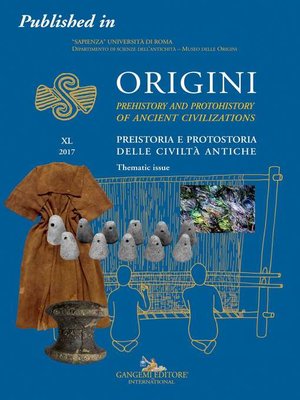Textile production in Iron Age Greece
ebook ∣ The case of the amorgina textiles: Published in Origini n. XL/2017. Rivista annuale del Dipartimento di Scienze dell'Antichità – "Sapienza" Università di Roma | Preistoria e protostoria delle civiltà antiche – Prehistory and protohistory
By Stella Spantidaki

Sign up to save your library
With an OverDrive account, you can save your favorite libraries for at-a-glance information about availability. Find out more about OverDrive accounts.
Find this title in Libby, the library reading app by OverDrive.



Search for a digital library with this title
Title found at these libraries:
| Library Name | Distance |
|---|---|
| Loading... |
Published in Origini n. XL/2017. Rivista annuale del Dipartimento di Scienze dell'Antichità – "Sapienza" Università di Roma | Preistoria e protostoria delle civiltà antiche – Prehistory and protohistory of ancient civilizations | The amorgina are a type of garment known from the Greek written sources of the Classical period. They are described as transparent and luxurious, and there is a discussion about their raw material (flax, silk or other). In this paper, I analyse the term both terminologically and technically in order to identify the characteristics of the amorgina garments. Etymologically it is connected to the olive oil residue, amorgē and the treatment of textiles with olive oil known in several stages of the chaîne opératoire. A treatment with oil would indeed add softness and brilliance to the fabric, and accentuate its effect of transparency.







